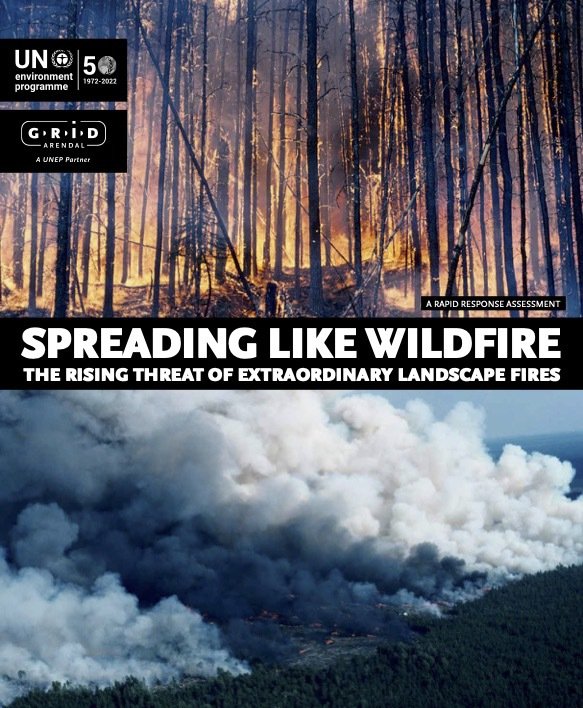 Read this article in French
Read this article in French- Share this article
- Subscribe to our newsletter
Rising Threat of Extraordinary Landscape Fires
Wildfires are projected to become more frequent and intense due to climate change and land-use changes, according to the report Spreading like Wildfire: The Rising Threat of Extraordinary Landscape Fires published by the UN Environment Programme (UNEP) and GRID-Arendal in February 2022. The authors estimate a global increase of extreme fires of up to 14 per cent by 2030, 30 per cent by the end of 2050 and 50 per cent by the end of the century. Wildfires disproportionately affect the world’s poorest nations and impede progress towards the UN Sustainable Development Goals.
Wildfires are made worse by climate change through increased drought, high air temperatures, low relative humidity, lightning, and strong winds resulting in hotter, drier, and longer fire seasons. At the same time, climate change is made worse by wildfires, mostly by ravaging sensitive and carbon-rich ecosystems like peatlands and rainforests. This turns landscapes into tinderboxes, making it harder to halt rising temperatures.
The publication calls on governments to adopt a new ‘Fire Ready Formula,’ with two-thirds of spending devoted to planning, prevention, preparedness, and recovery, and with one third left for response. Currently, direct responses to wildfires typically receive over half of related expenditures, while planning receives less than one per cent.
To prevent fires, authors call for a combination of data and science-based monitoring systems with Indigenous knowledge and for a stronger regional and international cooperation.
The restoration of ecosystems is an important avenue to mitigate the risk of wildfires before they occur and to build back better in their aftermath. Wetlands restoration and the reintroduction of species such as beavers, peatlands restoration, building at a distance from vegetation and preserving open space buffers are some examples of the essential investments into prevention, preparedness and recovery.
(UNEP/ile)
Read more and download the report at UNEP Website





Add a comment
Be the First to Comment